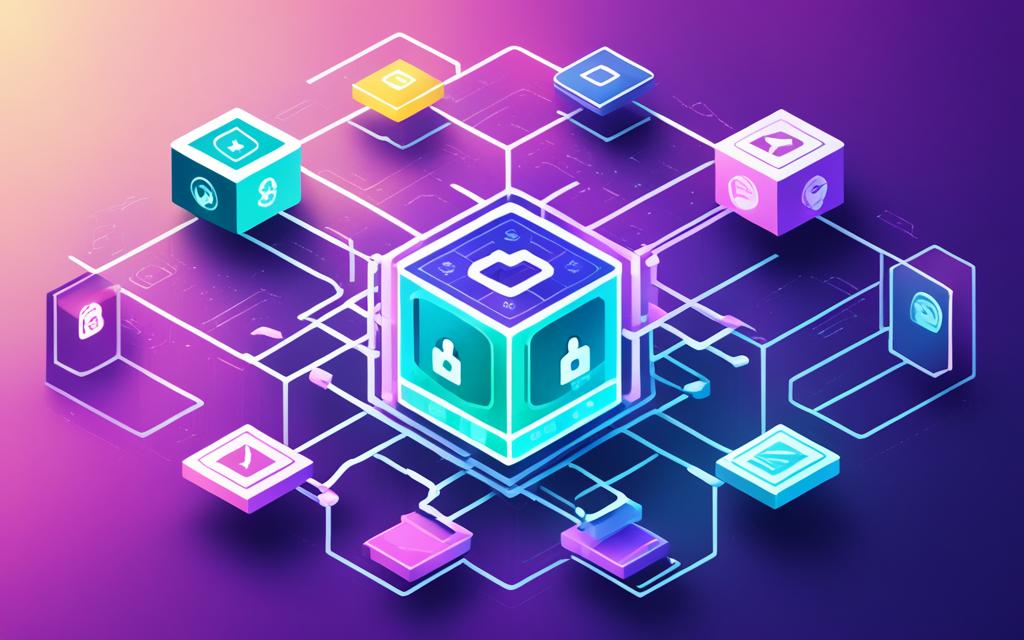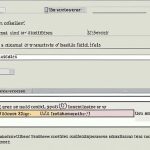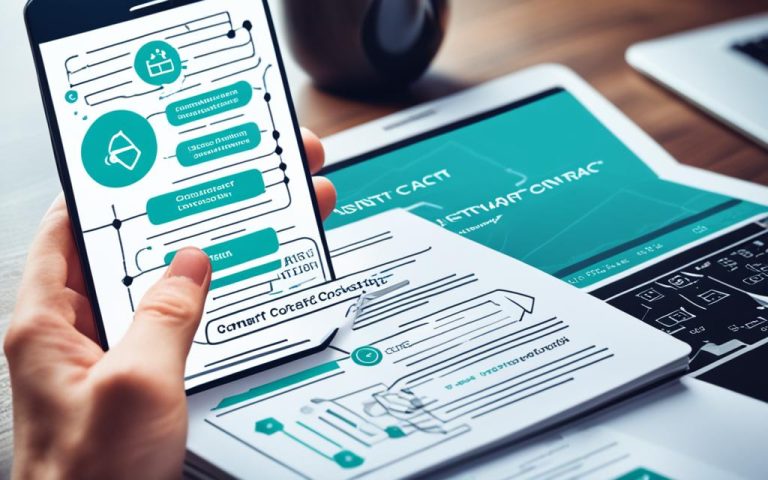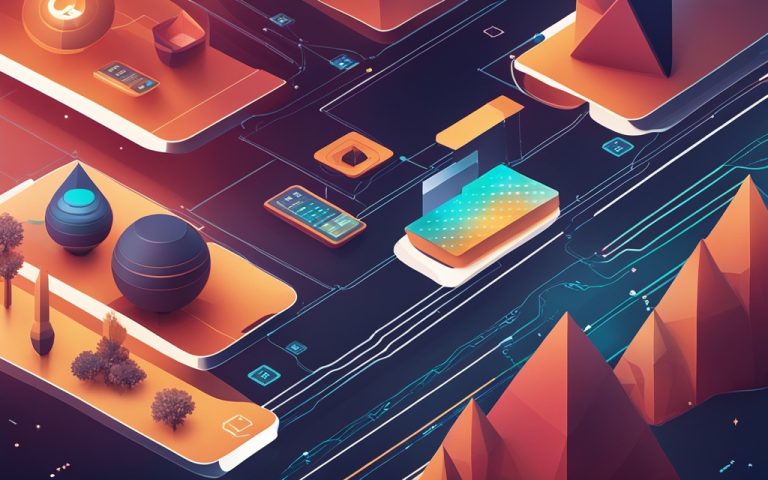Welcome to our guide on creating your own blockchain. Blockchain technology has changed many sectors like finance and healthcare. By grasping blockchain basics and following our guide, you can build a solution for your needs.
Understanding the Basics of Blockchain
It’s crucial to know what blockchain is before you start. It’s a technology that lets many people keep a shared database without a central figure. This ensures everyone agrees on the data’s accuracy.
Blockchain is built on key ideas like cryptographic hash and a peer-to-peer network. These elements help make blockchain secure and trustworthy. Understanding these will help you make a strong blockchain.
Choosing the right blockchain protocol is important. Each one, like Ethereum or Hyperledger Fabric, has its own strengths. For instance, Ethereum is secure and has global reach, but it can be slow and costly. Hyperledger Fabric is more flexible and good for smart contracts.
Consensus algorithms are also vital in blockchain. They help validate transactions and keep the blockchain honest. There are several types, including Proof of Work and Proof of Stake.
Create Your Own Blockchain
Now, let’s look at how to create your blockchain.
Step 1: Identify the Problem and Determine Feasibility
First, find a problem blockchain can solve. Many fields like healthcare and finance have benefited from blockchain. Think about how it can help in your case.
Learn more about blockchain applications in different sectors.
Step 2: Draft Business Requirements and Create Roadmap
Next, define what you need from your blockchain. Outline the functions, roles, and outcomes you want. A roadmap will help guide your project.
Step 3: Choose the Right Blockchain Platform
Pick a blockchain platform that fits your needs. Look at its scalability, language support, and consensus mechanism. Ethereum and Hyperledger Fabric are good options.
Discover how to build your own blockchain with these platforms.
Step 4: Design the Blockchain Nodes
Decide on your network’s architecture. It can be private, public, or a mix. Pick programming languages and systems that match your team’s skills.
Check out development resources for blockchain.
Step 5: Plan the Blockchain Configuration
Think about your blockchain’s setup, including permissions and asset management. Important aspects include data storage and security.
Step 6: Build APIs and User Interface
Create APIs for key functions like data validation and managing assets. Make sure your software is easy to use.
Step 7: Optimize Performance with Hardware Accelerators
Use hardware accelerators to improve your blockchain’s speed and performance. They make the system more efficient.
Following these steps will help you build your blockchain solution. Keep your audience and their needs in mind. With the right tools, blockchain technology will open new doors in your industry.
Understanding the Basics of Blockchain
Blockchain technology is more than just about digital currency. It’s a groundbreaking idea that can change many sectors by making them more secure, transparent, and efficient. Here, we’ll dive into the basic concepts of blockchain and see how it can be used.
What is Blockchain?
Blockchain is a way to keep records that makes sure they can’t be tampered with. It’s a ledger shared across many computers. This setup makes it very hard for anyone to hack or change the records. Every deal in the ledger is approved by the digital signature of the owner, which keeps the data safe.
Blockchain got famous because it can make transactions faster, cheaper, and safer. Many industries, such as finance and manufacturing, now rely on it.
Key Concepts in Blockchain
A blockchain has blocks that contain a header, the data, and a hash. The hash connects each block back to the previous one, creating a chain.
The time to make a new block can range from a few seconds to hours. A major change in the system, called a hard fork, can split a blockchain into two.
Decentralization spreads out the control, making everything more open and secure. Once a transaction is added to a block, it can’t be changed, which prevents fraud. Public blockchains let anyone check and verify transactions, building trust.
Blockchain Platforms and Applications
Bitcoin is the first app of blockchain and has inspired many others. Ethereum added things like smart contracts.
If you’re thinking about starting your own blockchain, knowing programming languages like Golang helps. It’s important to grasp the basics of blockchain and think about what your project needs.
To discover more about blockchain, these resources are helpful:
- Simplilearn’s Blockchain Technology Tutorial
- Stellar’s Blockchain Basics
- Investopedia’s Blockchain Definition
Create Your Own Blockchain
Starting a blockchain begins with understanding your needs. Is blockchain the right choice for you? Once decided, select a blockchain protocol. You might choose from Ethereum, Hyperledger Fabric, R3 Corda, or Polygon Edge. Each offers unique features.
Choosing the right consensus algorithm is vital. It could be Proof of Work (PoW), Proof of Stake (PoS), or others like Proof of Authority (PoA). Your choice should match your goals and network requirements.
Next, set up your blockchain network and launch your first smart contract. You might use blockchain-as-a-service platforms for help. These platforms offer tools and pre-built solutions to simplify development.
By taking these steps, you embark on a journey with blockchain. Create a blockchain that fits your needs. Discover what you can achieve with this technology.
FAQ
What is a blockchain?
A blockchain is a form of decentralized digital ledger. It securely records transactions in blocks. Each block is linked, creating a chain.
What are the key steps to building a blockchain solution?
First, you need to find a problem that blockchain can solve. Write down your business needs.
Then pick a way for your blockchain to agree on transactions, known as a consensus mechanism. Choose the right platform. Design your blockchain’s structure. Set up the blockchain’s network with planned architecture. Build APIs for interaction.
Lastly, work on the user interface. And don’t forget to speed up the performance where possible.
What are the benefits of using blockchain?
Blockchain cuts out the middlemen, making things direct and efficient. It’s unchanged over time, open for all to see, and secure. Plus, it’s reliable.
In which industries can blockchain be used?
Blockchain technology is versatile. It’s used in finance, supply chain, healthcare, real estate, and many other sectors.
What are some popular blockchain platforms and applications?
Leading blockchain platforms and apps include Bitcoin, Ethereum, Hyperledger Fabric, and Cardano.
How can I create my own blockchain?
To make your blockchain, start with a strong use case. Pick a suitable blockchain protocol and consensus algorithm. Then, set up your network and launch a smart contract. For an easier route, try blockchain-as-a-service or enterprise blockchain platforms.
What programming language can I use to create a blockchain?
Golang is an excellent choice for blockchain development. It simplifies the creation process.



















